Natural Ways To Erase Broken Blood Vessels On Your Face — Quickly and Permanently
Plus, dermatologists weigh in on the simple, laser techniques many women swear by
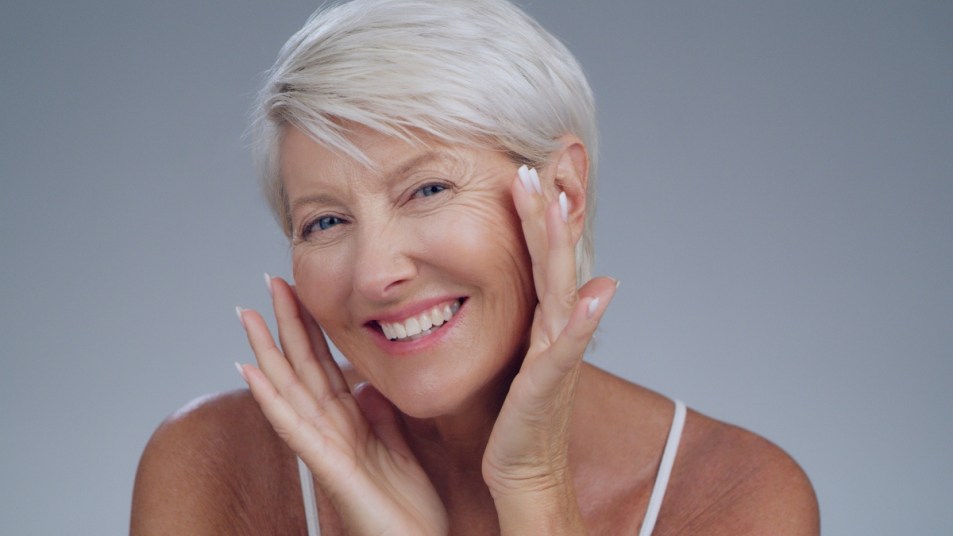
If you’re like us, you’ve had more than a few trips around the sun and your skin has seen it’s fair share of wind and cold and, yes, sun. All this weathering can lead to a sprinkling of broken blood vessels on or around your nose or on your cheeks. Dermatologists call them facial telangiectasia; we call them aggravating! Doctors say they are harmless and don’t require treatment, but since they are an unflattering sign of age, you may be wanting to see what you can do to fade them — and prevent more from setting up camp. Read on for everything you need to know.
What is a broken blood vessel on the face?
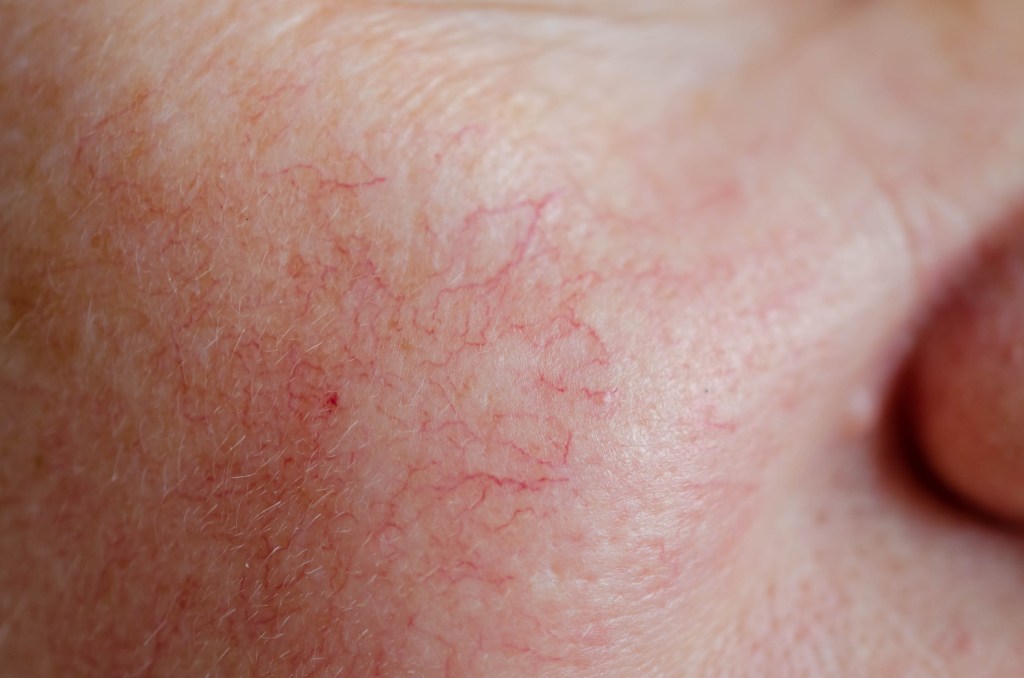
“Broken blood vessels are enlarged or dilated blood vessels beneath the skin’s surface,” explains Debra Jaliman, M.D, board certified dermatologist and Assistant Professor of Dermatology at Mt. Sinai School of Medicine in New York City. They can appear as pink or blue web-like lines that can be found on the nose, cheeks, legs and face, she explains.
What causes broken blood vessels on the face?
“Some people are predisposed to them, but broken blood vessels on the face are usually caused by chronic sun exposure in fair-skinned people,” says Kenneth Mark, MD, a New York-based board-certified dermatologist who sub-specializes in cosmetic surgical dermatology and Moh’s skin cancer surgery. What else factors in: “Thinning of the skin from sun exposure or excessive topical steroid use, or chronic flushing and blushing conditions, such as rosacea,” he explains.
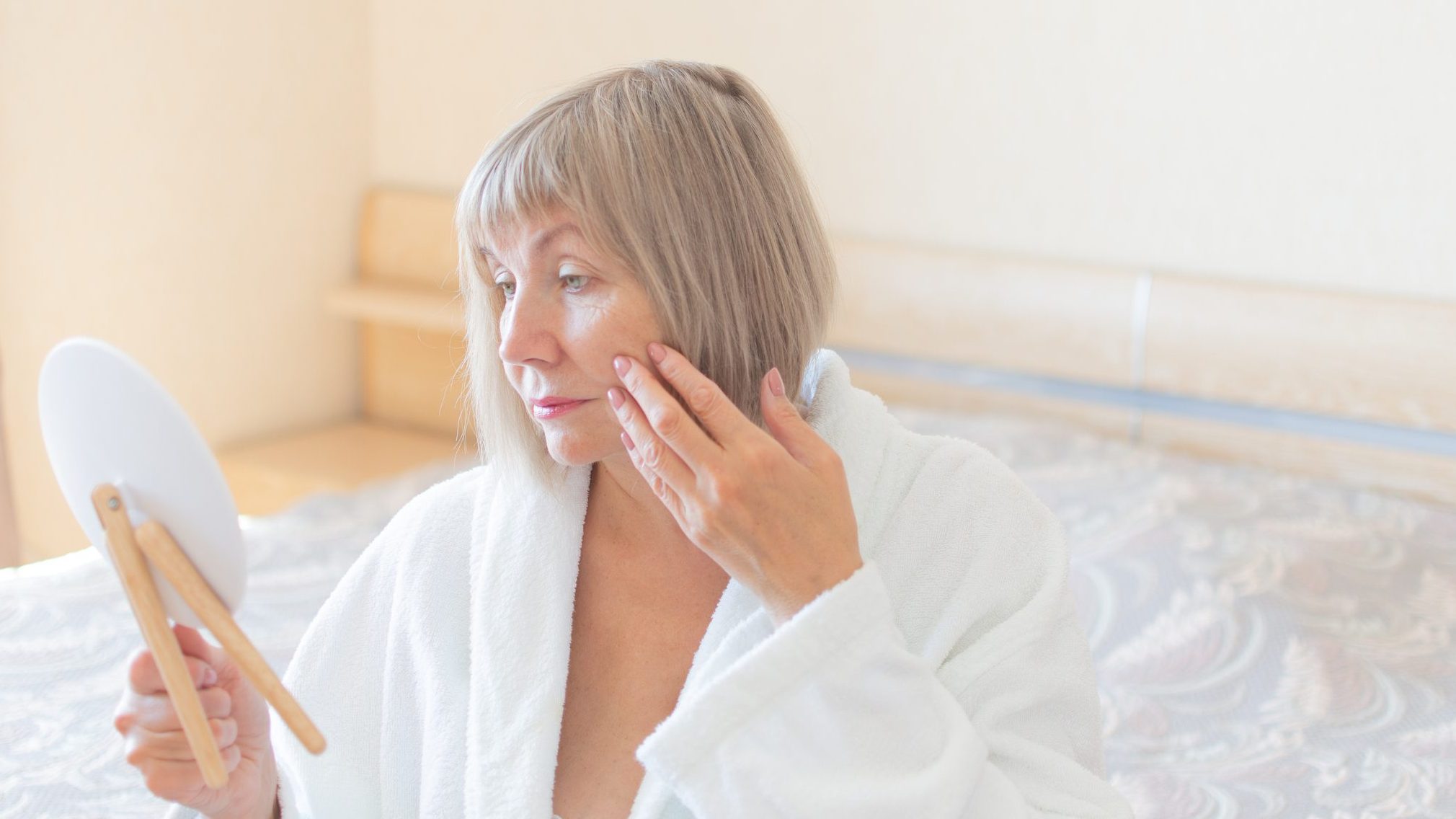
Additional causes, according to the National Library of Medicine: Pregnancy, which comes with many skin changes due to hormonal shifts and trauma to the area, which can damage veins and cause them to swell or bleed.
If you notice broken blood vessels popping up often, you may want to consider seeing a doctor for peace of mind. According to the Cleveland Clinic, broken blood vessels on the face are sometimes associated with liver disease or connective tissue diseases like scleroderma, dermatomyositis and lupus. Your doctor may want to run some tests to rule those conditions out.
Telangiectasias may develop anywhere but are most often seen around the nose and whites of the eyes. While they’re not dangerous and can typically be hidden with a layer of foundation or concealer, they can make you feel like you’re flushing all the time or impact your self-esteem.
How to get rid of broken blood vessels naturally
One ally in your fight against blood blood vessels of the face? Mother Nature. Here, a few of her mightiest soldiers in the fight for a clear, vein-free complexion:
1. A chilled natural astringent
Anything astringent like apple cider vinegar or witch hazel can constrict your blood vessels and help hide red veins. To do: Simply wipe your face with a cotton ball saturated in ACV after cleansing and before your moisturizer. This will fade the look of the vessels for a few hours. And this will work even better if the astringent is chilled first. Dr. Mark explains that any cold compress can help to shrink blood vessels temporarily.
2. Aloe vera gel
Cooling, soothing aloe vera gel is known for addressing redness — including, according to some fans, the redness of obvious veins. It’s been said that Cleopatra included aloe as a part of her daily beauty routine for radiant skin, and more recently, one study of women over age 45 found that using aloe gel topically for 90 days increased collagen production as well as skin elasticity — which are both essential to a youthful, wrinkle-free appearance. Plus, aloe vera is rich in nutrients like beta carotene and vitamins C and E, which all promote an ageless glow. (Click through for more on the anti-aging benefits of aloe vera gel.)
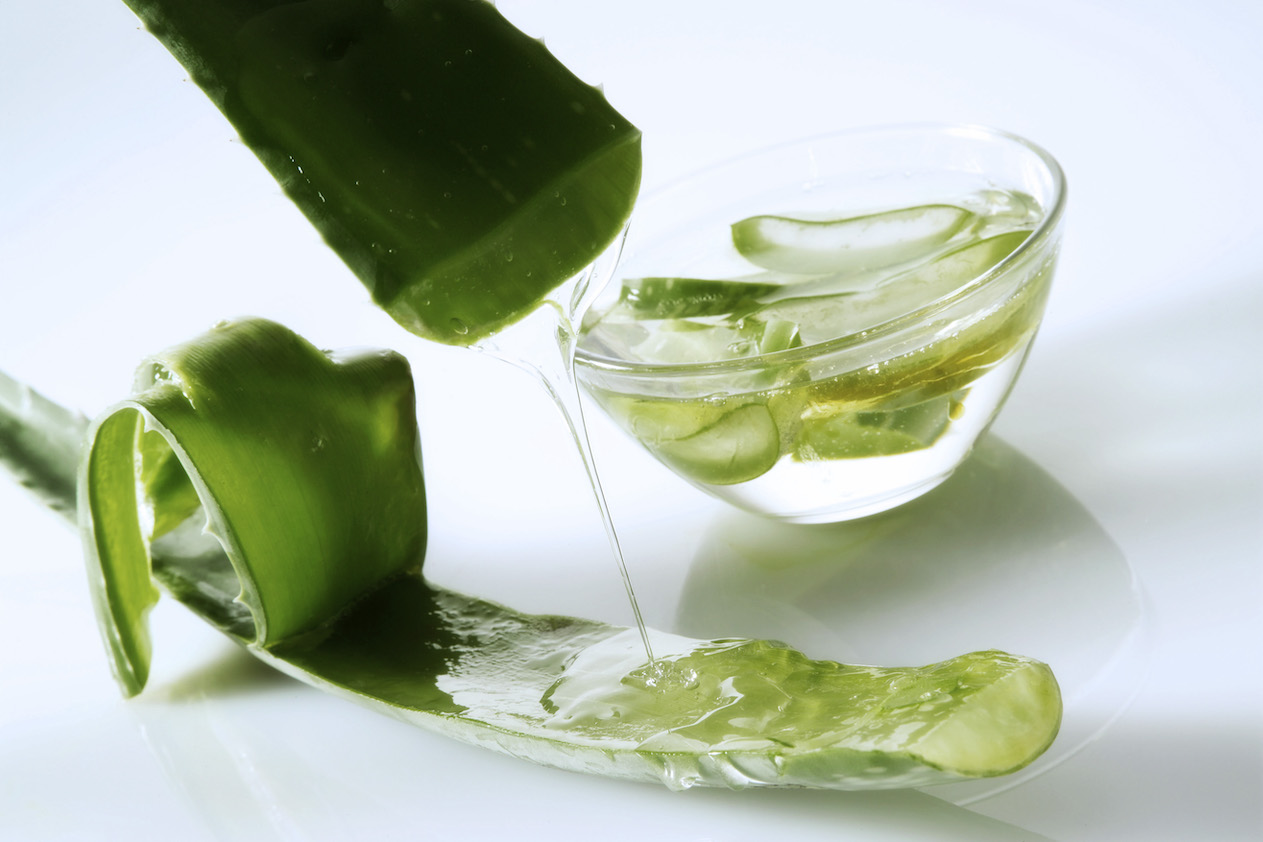
To do: You can apply the gel directly from an aloe plant by breaking a leaf off of an aloe plant as close to the stem as possible. (Or, you can find large aloe leaves in the produce section of many grocery stores.) Then, slice the aloe leaf so you’re left with about a three to four-inch piece. You should see the clear aloe gel between the layers of skin. Next, slice the skin off length-wise to remove the gel itself. Place the aloe gel into a small bowl and then simply rub the gel onto your face, focusing on the broken blood vessels. Leave your aloe face mask on for about 20 minutes, then rinse with warm water. Any leftover gel can be saved in the fridge for about a week. Or try a face cream spiked with aloe like Burt’s Bees Senstive Solutions Calming Day Lotion (Buy from Amazon, $12).
4. Vitamin K cream
Researchers reporting in the Journal of Vascular Research found that healthy veins are rich in matrix gla protein (MGP), a structural protein that helps blood vessels hold their shape against the constant force of fluid. But that compound lies dormant in varicose vein tissue. The good news: Smoothing on vitamin K can switch on MGP to strengthen vein walls and reduce varicose veins.
“I often suggest vitamin K cream to my patients who have spider or varicose veins,” says cosmetic surgeon Shain Cuber, MD. “Blood vessels absorb the nutrient directly via fat tissue in skin.” To get the benefits, choose a cream with phytonadione (the chemical name for vitamin K) listed as a top ingredient. One to try: Reviva Labs Vitamin K Cream (Buy from Amazon.com, $15.64).
5. Horse chestnut gel
Gels and creams made from the seeds of the horse chestnut tree acts as both an astringent to tighten and tone varicose veins and an anti-inflammatory to reduce swelling and improve blood flow. Swiss research suggests 85% of folks who applied horse chestnut gel daily for six weeks to varicose veins reduced pain by 64%, heaviness by 60%, itchiness by 71% and fluid buildup by 50%. And small broken blood vessels are a lot easier to shrink than larger veins. One to try: A. Vogel Venagel Horse Chestnut Gel (Buy from Amazon.com, $26.42). (Click through for more on witch hazel and other natural remedies for varicose veins.)
How to get rid of broken blood vessels in a doctor’s office
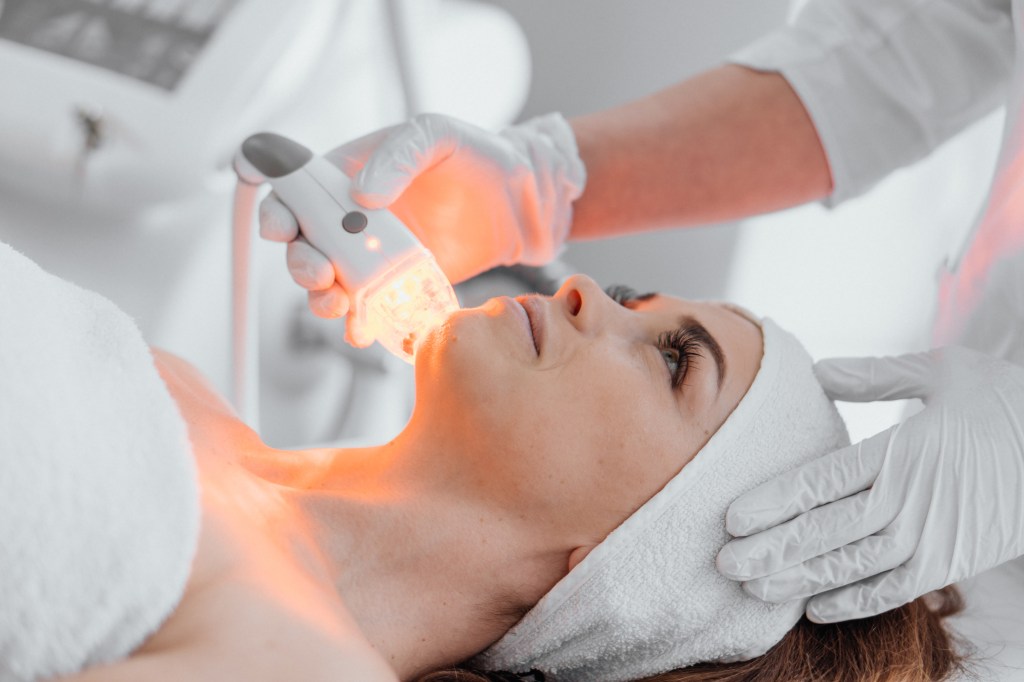
If you’ve tried at-home options and the broken blood vessels on your face continue to cause you grief, a few trips to your dermatologist can make them go poof. The two major solutions for capillaries above the neck:
- Laser therapy: Using a single wavelength of energy, laser light targets blood vessels to deliver heat that damages the blood vessel, making it collapse and fade away, explains Dr. Sandy Skotnicki, MD FRCPC, FABD, founder of Toronto’s Bay Dermatology Centre and an assistant professor in the department of medicine in the divisions of dermatology and occupational and environmental health at the University of Toronto, “The most common laser to address redness and telangiectasia is called a V-beam laser. It uses a pulsed dye at a 595 wavelength which is selectively absorbed by hemoglobin inside blood vessels.”
- Intense pulsed light (IPL): This option works similarly to laser therapy, except instead of one wavelength of light, Dr. Skotnicki explains, “it uses a range of wavelengths to target both blood vessels as well as melanin pigment.”
What to expect to pay? “Depending on the size of the area being treated, IPL or laser can cost between $375 and $950 per session, and three to five sessions are typically required,” says Dr. Mark.
How to prevent broken blood vessels on the face
Prevention is often your best bet when it comes to dealing with any skin concerns, and a few lifestyle changes can go a long way in keeping your blood vessels at bay.
Limit time in the sun (and slather on sunscreen)
Because they have such a high correlation with sun damage, Dr. Skotnick says for anyone prone to broken capillaries, “avoiding peak sun is important.” That means running for shade when you can and always using sunscreen — which is a good idea to be doing anyway.
Avoid using hot water on the face
While you might love a steamy shower, they aren’t so great for broken blood vessels. That’s because, Dr. Mark explains, “Hot water causes increased redness via vasodilation.” So opting for cooler water can help minimize the appearance of your veins.
Avoid alcohol
Research shows that drinking alcohol can have many effects on the cardiovascular system, as it’s a vasodilator. That means it can bring on a flush, making veins more obvious.
For more facial skin care tips and tricks, click through these stories:
The 15 Best Herbal Skin Solutions For Gorgeous, Glowing Skin From Head To Toe
Dermatologists Weigh In on the Best Ways to Smooth Crepey Skin On Face
How To Dry Brush Your Face + the $8 Tool That Will Shed Years From Your Face
Red + Blue Light Therapy Can Regrow Hair + Rejuvenate Skin — Get the Results Easily at Home!
















